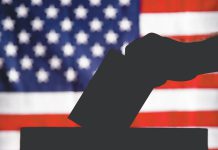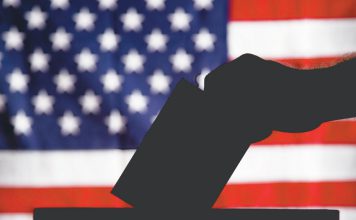Even though I only had my grandmother around until I was 7 years
old, I was very aware that she was the
”
daughter
”
of an American Revolutionary. She had spent many hours
researching our family tree to find her Patriot.
Even though I only had my grandmother around until I was 7 years old, I was very aware that she was the “daughter” of an American Revolutionary. She had spent many hours researching our family tree to find her Patriot.
After many hours spent writing letters to every obscure cousin on the planet, ordering birth and death certificates from the east coast, and quizzing every living relative she could find, the day finally came when she was accepted into the National Society Daughters of the American Revolution (DAR). She became a very active member, and my family has every yellowed newspaper clipping to prove it.
Each year at Christmas she donned her Revolutionary War period dress with long, flowing sleeves, until the day came that she had the inspiration to donate it to the DAR. Yep, that meant more write-ups in the newspaper. She was a local celebrity in her little community.
The DAR was founded in 1890 by four women whose common bond was the fact that each had fathers or grandfathers who were patriots of the American Revolution. The founders of the Daughters of the American Revolution sought to create an organization that would “perpetuate the memory and spirit of the women and men who achieved American independence.”
DAR members volunteer more than 55,000 hours annually to veteran patients, award over $150,000 in scholarships and financial aid each year to students, and support schools for the underprivileged with annual donations exceeding one million dollars.
In an infamous incident in 1939, the great contralto Marian Anderson was not permitted to sing at the DAR Constitution Hall. Many people are not aware that after desegregation, Anderson sang at Constitution Hall six times and even launched her farewell tour from the DAR stage. Today the DAR has members of all ethnic and religious backgrounds.
Here in Gilroy, local Gabilan Chapter members meet in each others’ homes. It is so rare for me to go anyplace these days where people say the pledge of allegiance or sing the national anthem, but that’s how each DAR meeting begins. I was surprised I still recalled all the words, but as we stood to pledge and sing in Ann Zuhr’s lovely home, it started coming back to me.
The topic of discussion at this month’s meeting was an idea Gilroy member Mary Beth Nagareda came up with: Navajo Code Talkers of WWII. This topic led into a discussion of how more than 20 Native American languages have been used to create indecipherable codes during war time since WWI.
That in turn led to an interesting discussion about Japanese internment camps during WWII, as well as German and Italian ones.
Not having many living relatives (no aunts, uncles, cousins, siblings, etc.), I fantasize about what my ancestors must have been like. Organizations like the DAR do a lot to preserve our national history, so that it’s there to be discovered when we seek it out.
I met a lady at the meeting named Ruby Hart who handed me a computer printout which included information on my gr.gr.gr.gr.gr.gr. grandparents, Captain Stephen Cole and Elener Bounds, who lived in Virginia in the 1700s. It’s not often that a total stranger can surprise me like that. Thanks to the DAR, now I can get in touch with more of my roots.













